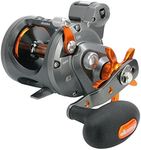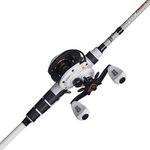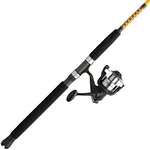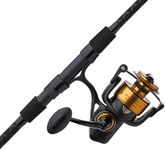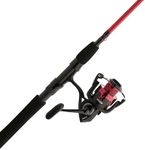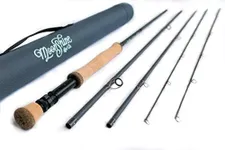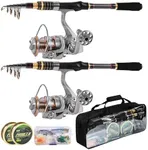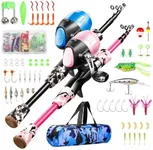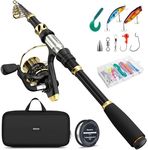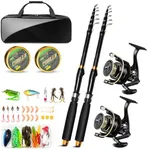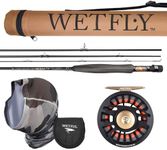Buying Guide for the Best Fishing Rods And Reels
Choosing the right fishing rod and reel can greatly enhance your fishing experience. The right combination will depend on the type of fishing you plan to do, the species you are targeting, and your personal preferences. Understanding the key specifications will help you make an informed decision and ensure you have the best equipment for your needs.Rod LengthRod length is the measurement from the tip of the rod to the butt. It affects casting distance, accuracy, and the leverage you have when fighting a fish. Shorter rods (6 feet or less) are ideal for close-quarters fishing and provide better control, while longer rods (7 feet or more) allow for longer casts and are better for open water. Choose a rod length based on where you will be fishing and the type of fish you are targeting.
Rod PowerRod power refers to the rod's resistance to bending under load, often categorized as light, medium, or heavy. Light power rods are suitable for small fish and light lures, medium power rods are versatile and can handle a variety of fish and lures, and heavy power rods are designed for large fish and heavy lures. Select the rod power based on the size of the fish you expect to catch and the type of lures you will be using.
Rod ActionRod action describes how much and where a rod bends when pressure is applied. Fast action rods bend mostly at the tip, providing quick hook sets and sensitivity, making them ideal for single-hook lures. Medium action rods bend in the top half, offering a balance of sensitivity and flexibility, suitable for a variety of lures. Slow action rods bend throughout the entire length, providing a more forgiving bend, which is great for casting light lures and fighting small fish. Choose the rod action based on the type of lures you will use and the fishing techniques you prefer.
Reel TypeThere are several types of reels, including spinning, baitcasting, and spincast reels. Spinning reels are versatile and easy to use, making them great for beginners and suitable for a wide range of fishing styles. Baitcasting reels offer more control and accuracy, ideal for experienced anglers targeting larger fish. Spincast reels are simple and user-friendly, perfect for casual fishing and beginners. Select the reel type based on your experience level and the type of fishing you plan to do.
Reel Gear RatioThe gear ratio of a reel indicates how many times the spool rotates with one turn of the handle. A higher gear ratio (6:1 or higher) retrieves line quickly, making it suitable for fast-moving lures and techniques. A lower gear ratio (5:1 or lower) provides more torque, ideal for slow presentations and fighting strong fish. Choose a gear ratio based on the fishing techniques you will use and the speed at which you need to retrieve your line.
Line CapacityLine capacity refers to the amount of fishing line a reel can hold, usually measured in yards for a specific line weight. It is important because it determines how much line you have available for casting and fighting fish. Larger line capacity is beneficial for targeting big fish or fishing in deep water, while smaller line capacity is sufficient for smaller fish and shallow water. Choose a reel with a line capacity that matches the type of fishing you plan to do and the size of fish you are targeting.



